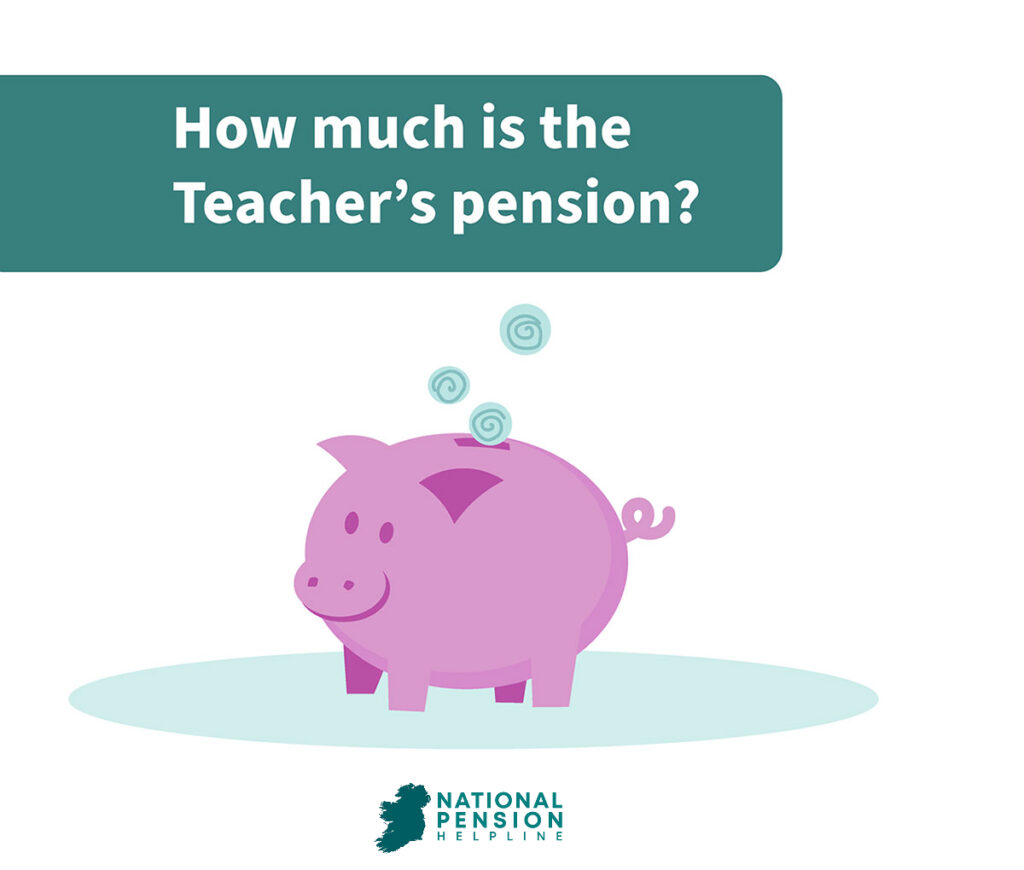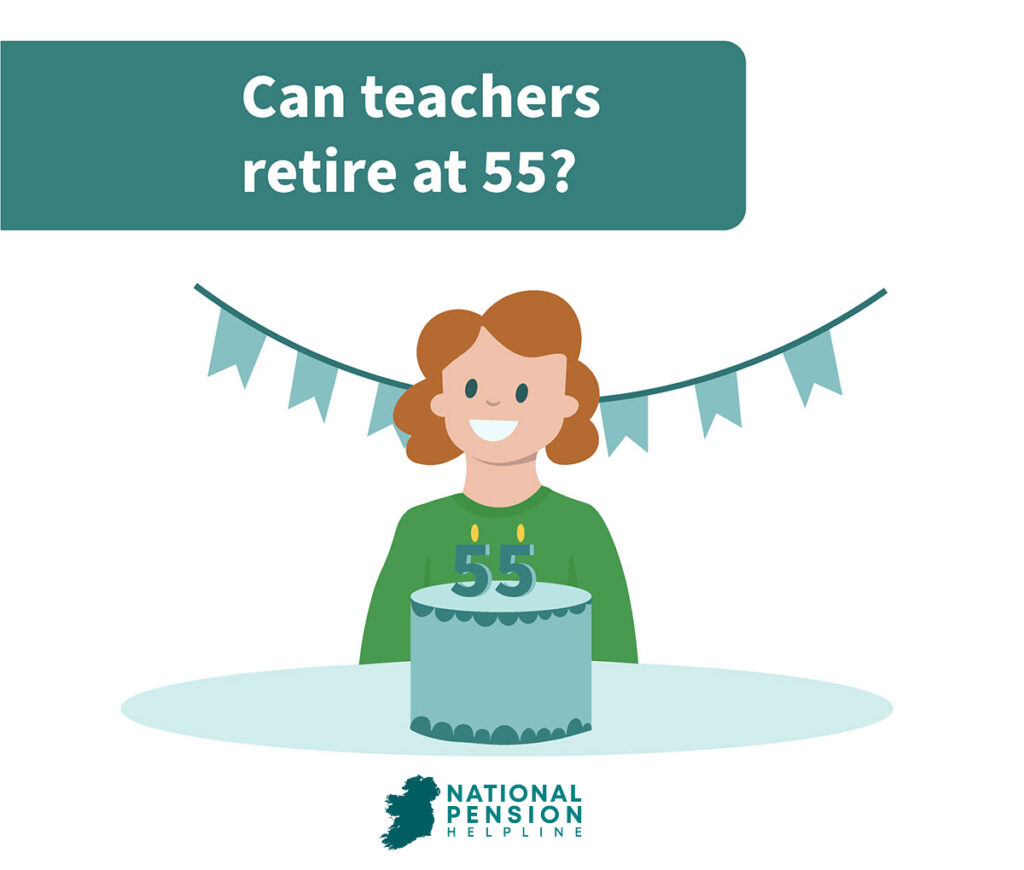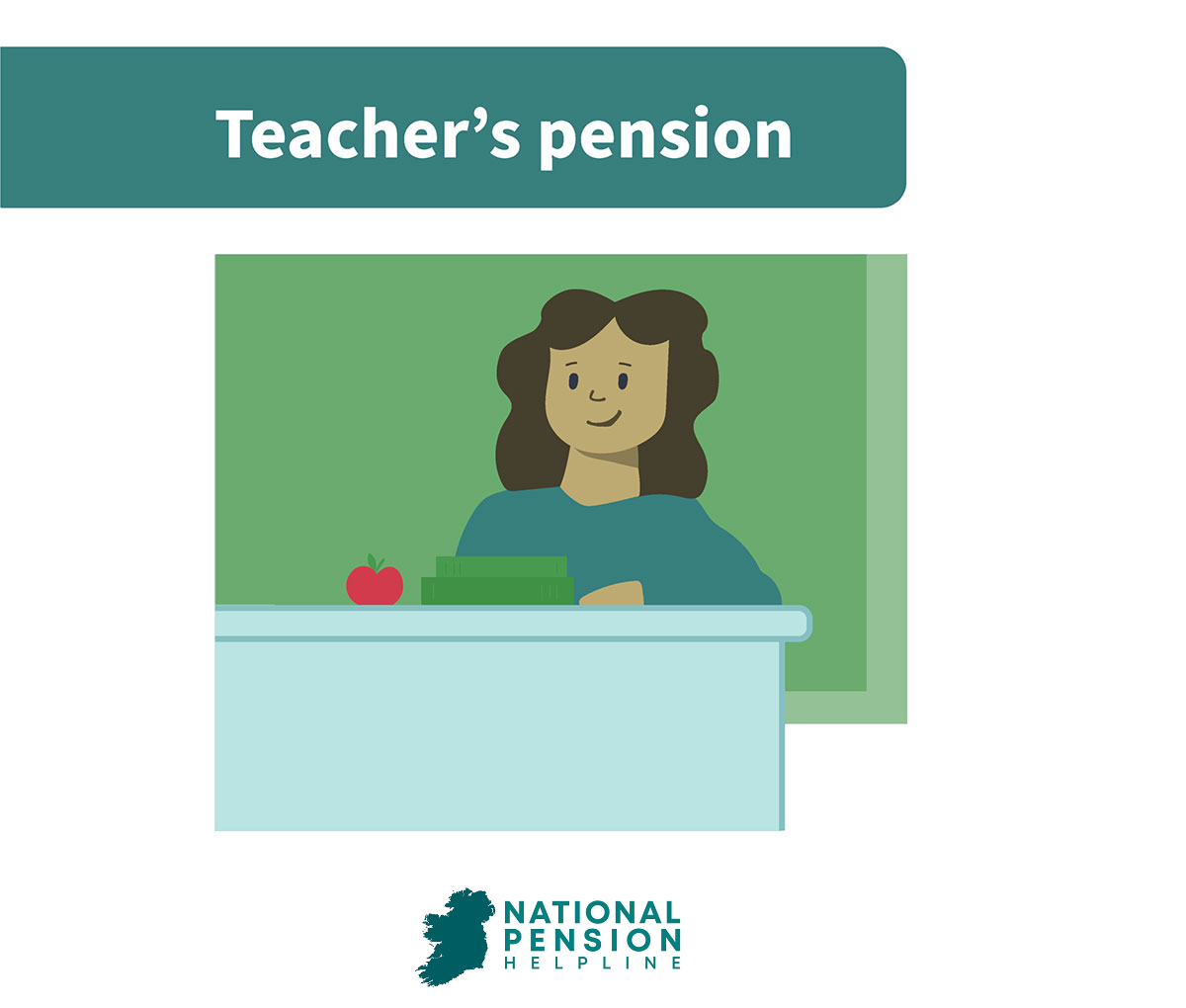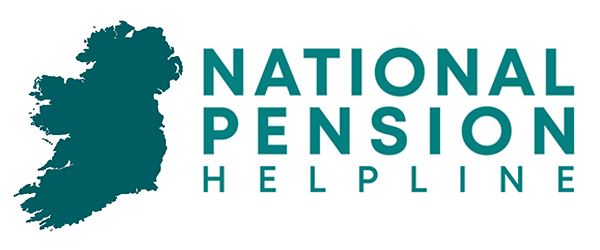About the Teachers Pension in Ireland
Pensions are big news at the moment. Every sector of Irish society is having a say on their pension schemes, and no more so than teachers.
The teacher’s pension is thought to be a very good one, and is seen as one of the perks of the job. What about the ins and outs of the pension? Is it really all that it is cracked up to be and are the benefits that good?
Here we’ll take a look at the teachers’ pension scheme in Ireland. There are so many questions and comparisons to be made, and, hopefully, all will be much clearer by the end of the piece. Everyone wants to know more about their pension when planning for retirement. Those who are thinking of taking up a career in teaching should know their options, before starting on day one.
Let’s take a look at the answers to some of the more popular questions.
Table of Contents
How much is an Irish teacher’s pension?
Like so many public service employment sectors, there is not the one answer. An article such as this one pulls all the information together, to try make sense of the options.
The final pension figure a teacher receives depends on so many factors. Maybe they should teach a course?
There is a pension amount dependent on years of service. Another one is decided on when you took up employment and yet another one influenced by a different starting date.
You get a certain amount due to your final salary. Your pension is also set by whether you were at compulsory retirement age or if you took voluntary retirement.
With more questions than answers maybe it’s time for some hard facts.

Do teachers get the State pension in Ireland?
Yes and no is the quick answer. If you commenced employment as a teacher before 6th April 1995, then you do not get the State pension.
Your pension is paid in full by the Dept of Education. For those who commenced employment after 6th April 1995, or took a career break and came back after that date, then the situation is a bit different.
Teachers in the second category qualify for a ‘coordinated pension’ when they retire at 66. Retirees receive a lower occupational pension, supplemented by the State Pension.
Applicants may qualify for the pension as they have been paying PRSI contributions at the higher A rate.
If a teacher retires before age 66, the Dept of Education will pay an extra amount to make up for any income gap. The extra payments cease when they turn 66.

How much pension does a teacher get?
In theory every retired teacher gets the same pension, but the reality is very different. The pension scheme payment differs from teacher to teacher, with probably very few getting the exact same amount.
To figure out all the pension scheme rules, you would probably need a separate degree.
Without blinding anyone with figures and equations, teachers’ pension payments are calculated by many variables.
One is the date a teacher began employment, and there are even a few options here. Another is years of pensionable service, but this can differ if the teacher took any breaks during their career.
The level of the teaching degree or responsibility taken in the job, is also taken into account as are PRSI contributions.
Length of service and salary on retirement are the two areas which determine a teacher’s pension. The two are affected by the above variables, as well as a few others. Suffice to say, it is not easy to determine a teacher’s final pension, no matter how it is approached.
The Teachers Pensions Calculator is a Department of Education and Skills tool to help determine the pension a teacher receives. A teacher can enter all their details and pension scheme variables to get a good idea of what they will be entitled to at retirement age.
Can teachers retire at 55 in Ireland?
Yes, if a teacher fulfils the minimum service requirement, they can retire at 55.
What those requirements are, and how a teacher hits them, is another set of questions to answer.
The teacher will not get the full pension and lump sum payable at 55, but they can retire.
When a teacher reaches retirement age, they can retire. To retire at 55 with all your pension benefits, you will need to have put in 35 years of pensionable service.
A pension credit is given depending on the years of training the teacher did, with a maximum credit of four years permitted. In this example, a teacher can retire early having 33 years of pensionable service, only if they did the four years of training before entering the profession.
As in all things to do with the teachers’ pension in Ireland, nothing is straightforward. The ability to retire at 55 can depend on many other variables too.
The date of starting a teaching career, any service breaks taken, and job-sharing years can affect the retirement age limit. When the pension calculation begins for a teacher considering retiring, so does the head-scratching.
It has been known for a teacher to retire at 55 but not receive what they were expecting in retirement benefits.
Retirement planning is worth doing, and doing so properly if planning an early retirement.

How much pension do UK teachers get?
Like their counterpart’s pension in Ireland, UK teachers receive differing amounts, dependent on a few variables.
UK teachers who were in the job previous to 2015 were on a final salary scheme. Teachers moved to a career average salary scheme after 2015, with protections in place for those older teachers close to retirement age.
There are fewer terms and conditions to UK teachers’ pensions. With this in mind it is easier to calculate how much pension a UK teacher will get but there are still a few ifs and buts to negotiate. Teachers’ salaries are lower in the UK, on average, and a retired teacher may receive a lot less in pension payments than their Irish counterparts.
At what age can teachers retire in Ireland?
Again there are a few variables to contend with here. New entrants to public service superannuation schemes can only retire with pension benefits at 65 in Ireland.
Under the scheme new entrants are defined as having joined the public service during or after 2004 and having at least two years of pensionable service under their belt. Included under this term are teachers who returned to work after an agreed break of more than 26 weeks.
Teachers who were in the job prior to 2004 can retire a bit earlier. If you have a minimum of two years of pensionable service done, you can retire at 60 years of age.
When a teacher has 35 years of service completed, they can retire once they reach 55 years of age. As explained earlier, any years of training prior to entering the profession are taken into account, with a maximum of four years allowed.
How much is a primary school teacher’s pension in Ireland?
Around €21,875 is the general pension a primary school teacher receives, but this sum is dependent on so many variables. It is calculated on the final salary method for a teacher who retires on an annual salary of 50,000, if they began teaching before April 1995.
Other factors can affect the amount too, from training to uninterrupted years of teaching.
There is no one answer to the question of an actual primary school teacher’s pension. Years of service and when the teacher began service are two factors. Another one is if you are are on final salary pension or a career average scheme.
A maximum of 40 years can be taken into account for calculating pension payments. If a teacher works for more than 40 years, they will not see a benefit in their final pension.
At what age do most teachers retire?
A teacher may retire at 60 if they took up service before 1st April 2005. 65 is the retirement age for those who took up public service after that date, including teachers.
Teachers face compulsory retirement when they turn 70 years of age. If a teacher took up working in the sector after 2013, they would be on a career average pension scheme.
For these teachers to get a decent pension, they may need to work up to age 65, or even 70 under the new rules.
55 is a popular age for teachers to retire but only if they have done 35 years of pensionable service. The minimum years of teaching requirement, and of pre service training, can determine if it is possible for teachers to retire at 55.
The teacher pension calculator will tell the expected pension at retirement age and is a good guide. All variables are taken into account and should give a teacher contemplating early retirement an idea of their entitlements.
When can I retire from teaching in Ireland?
You can retire from teaching in Ireland at any age but you may not get a pension, or the one you were expecting.
A teacher will need a minimum of two years of pensionable service before retiring at any age to receive a pension at age 65. With only two years of pension contributions, the retiring teacher will not receive much of a pension.
The longer you stay in actual pensionable service the more you will be in your pension pot. With all the other variables added in for pension purposes, it is to a teacher’s benefit to stay until at least aged 55.
Can a teacher work after retiring at 55?
Yes, a teacher can work but it will affect any pension payments.
If they take up teaching work again the teacher will start as if a recent graduate under the equivalent pay rates. They will also work under the terms of the Public Service Pension Act of 2012.
Serving teachers who take early retirement and return to work in a different sector, not public service, may face many hurdles.
A reduction in pension payments or higher rates of tax can occur. Retired teachers thinking or returning to the workforce, should first seek professional advice. All may not be as it seems when first looking.
What is the teacher’s retirement lump sum?
A lump sum is payable to serving teachers upon retirement, providing they have their pension contributions up to date.
The amount of the lump sum paid depends on when the teacher commenced employment and at what age they retire. Every lump sum is calculated by an equation taking in years of pensionable service, level of training and other variables. Part-time service is also included at a pro-rata rate.
Is the lump sum tax-free?
Yes, is the good news. There is an upper limit of 200,000 for tax-free entitlements on a lump sum paid in Ireland. The pension and lump sum is paid from the time of retirement providing all other conditions are met by the teacher.
A lump sum is based on 3 / 8oths of the retiring salary in the final year of pensionable service for most teachers. Due to differences in pension scheme agreements, depending on the year taking up pensionable service, there is no one fixed lump sum figure.
Teachers can only claim a lump sum for 40 years of pensionable service or 120 / 80ths of retiring salary.
At what age do teachers retire in the UK?
If you taught for a while in the UK you many be able to transfer your pension benefits. It is worth investigating the rules and see what you may be due.
The earliest teachers can retire in the UK is at age 55. As in Ireland, teachers need a minimum of two years pensionable service before they receive any pension benefits. Early retirement, before 55, requires the teacher to be granted ill-health benefits.
The UK government intends to increase the minimum retirement age from 55 to 57 in 2028. They also have plans to keep it at ten years below the pension age in the future.
Do teachers get good pensions?
Yes, teachers in Ireland get a good pension. If they put in the years of actual pensionable service, pay contributions, do the required pre-service training, retirement can be comfortable. Teachers in comprehensive schools, secondary teachers and national school teachers qualify for the Department of Education pension scheme.
The pension and lump sum benefits are mainly calculated on the total years of pensionable service. In essence the longer you stay in the job the better your pension and lump sum will be at retirement.
Due to revisions in public service superannuation schemes new entrants to teaching may not get all the benefits. Retirement planning is essential. Any previous service can be taken into account and every teacher should check carefully that they are getting their full amount of any pensions paid.
How much do teachers pay towards their pension?
A teacher will pay 5% of their annual salary to the contributory scheme, if they pay PRSI at the D rate. Teachers on the A rate, the higher rate, pay 1.5% of what is known as remuneration. Remuneration is their annual salary, plus pension allowances and any supervision or substitution payments paid in the year. Calculations are done before income tax.
They also contribute 3.5% of net remuneration, which is the difference between remuneration and twice the rate of the contributory State Pension. Part-time teachers may pay at a pro-rata rate, depending on when they took up their teaching career.
The notional service purchase scheme
Many teachers may not have their full years of service completed by the time they reach retirement. Sound retirement planning will identify the problem well in advance.
For those looking for a retiring salary to match their lifestyle plans, action will be needed.
Purchasing notional service is a government initiative to aid teachers who came into the profession later in life. It is also known as ‘buying back years’ and is popular among teachers.
A teacher can purchase notional service by means of a lump sum payment. Other teachers make salary deductions to make up for their missing contributions.
The notional service purchase scheme is a great boon for teachers not wishing to miss out on a pension when making a career change into teaching. Contributions may be allowable against income tax but subject to other Revenue Commissioners’ guidelines.
What is cost neutral early retirement?
Another mouthful but this scheme allows a teacher to retire early but avail of immediate pension payments.
Of course there is also an actuarial calculation made to reduce the payment amount to reflect the longer years of retirement. The cost neutral early retirement scheme is also dependent on the teacher being in the relevant pension scheme.
They must also have eligibility for a preserved pension scheme at age 60 or 65.
A teacher availing of cost neutral early retirement can also decide to defer payment of pension and lump sum until they reach 65. In this case they will get the full pension and lump sum payable.
How about the Spouses and Children’s Pension Scheme?
The spouses and children’s pension scheme was introduced to help a teacher’s family in the case of their death after retirement.
Contributions to the spouses and children’s pension scheme are mandatory. The scheme can be of huge financial benefit to a family.
If a teacher dies after retiring their spouse is entitled to half the pension payments they were receiving.
The spouses and children’s pension scheme also covers the payment of benefits up to age 18 or 22 if the child is in full-time education. If a child is permanently disabled payment can be for life under the spouses and children’s scheme.
The spouses and children’s pension rates are dependent on a few differing factors.
Retiring due to ill health
Outside of the spouses and children’s pension scheme a teacher’s family can be helped in the case of retiring due to illness. If the Department of Education is satisfied that a teacher is permanently incapacitated due to mental illness or ill-health they can grant early retirement.
Pension and lump sums due are calculated according to standard rules.
Contact us
We understand pensions and know your concerns. The pension a teacher gets in Ireland is subject to many terms and conditions. Do not get bogged down in the language and red tape. Call us today to get all your pension questions answered.


